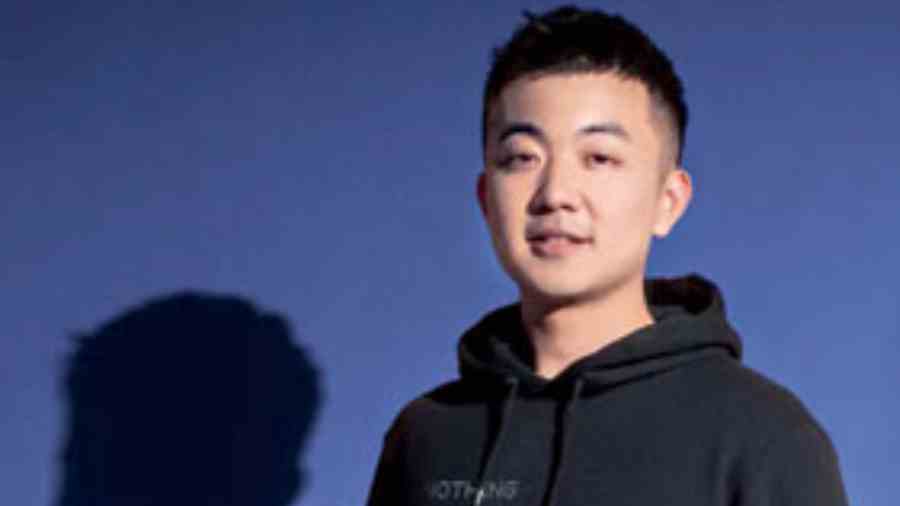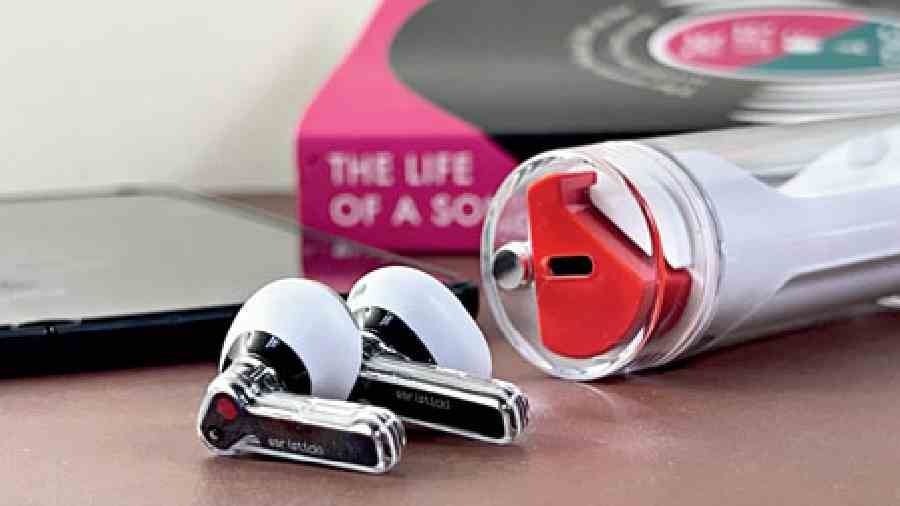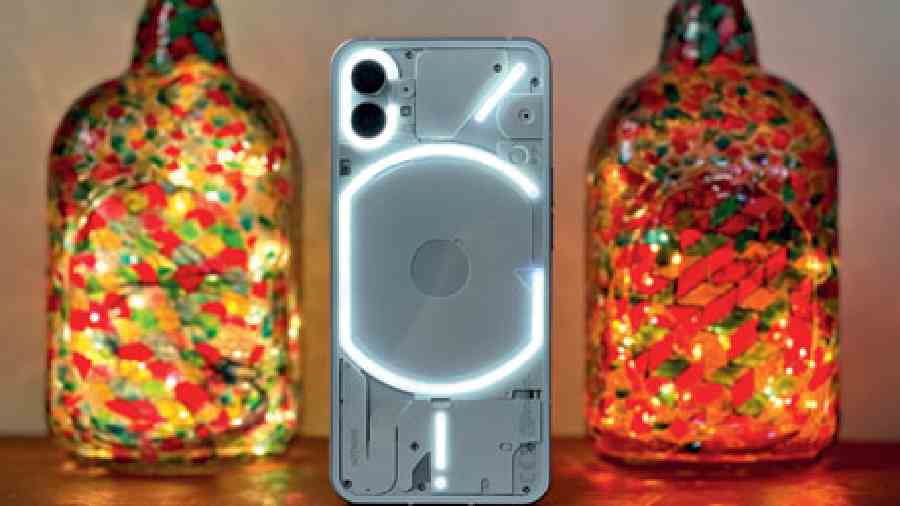It’s been a year when smartphones have largely remained boring. There have been a few winners. Samsung has done brilliantly well with its folding phones. Apple moved to the next level with the Dynamic Island on its iPhone 14 Pro, showing how differently hardware and software can interact. Google gave us plenty to talk about when it comes to software driving a product. And there is one more phone — Nothing Phone 1. It’s funky, it’s a delight and it’s nothing like we have seen before.
Nothing is Carl Pei’s brainchild. Based out of London, Nothing is just two years old and it has already delivered a few great products — first it was Ear 1 wireless earbuds, then came the first smartphone called Phone 1 and also Ear Stick. Pei and his team are not looking at delivering 50 smartphones every year. It’s about putting across meaningful tech which simply works as soon as you take it out of the box — nothing complicated, yet everything is oh-so-cool.
We spoke to Manu Sharma, vice-president and general manager, Nothing India, about what’s making the two-year-old company driving conversations. Here’s what he has to say.

Manu Sharma, vice-president and general manager, Nothing India

Carl Pei, founder of Nothing, to Engadget
Nothing Phone 1 comes at a time when smartphone tech appears slightly boring and almost every phone looks the same. How do you distinguish your brand?
We are a brand that’s like a startup, and we started from scratch. In the middle of Covid, working together, launching our first product — Ear 1 — and then, of course, building the narrative around the phone. The team did a tremendous job. We are not here to launch product after product; we are here for the long-term. Even for Ear 1 there were some challenges, but we overcame that and, and for Phone 1, of course, there was a lot of feedback. But the most important point is that we want to work with consumers to really help build products together.
Second is, we are very open about taking feedback. For example, we just said, ‘Hey, we are going to open up open beta for Android 13.’ I think this very powerful message: We want to work with our fans.
The third thing is that… definitely the design is going to be the biggest differentiator for us clearly. When you say that tech is boring, we try to bring excitement, not just in the physical design… also in what you do with it. For example, the camera recorder with the red light is pretty interesting. People love it. Glyph is something people really love. What we’re building is also the functionality of the Glyph.
We will continue to build on the things that we’ve done well, and definitely design is one of them. We see a great opportunity to build software and elevate that to the next level. And third part will be opening up the ecosystem of building software.
Companies plan five-seven years in advance. What about you?
One of the core values that we have internally is to survive. Survival in a true sense is also about being flexible. We have entered a market that is very hyper-competitive. There are brands that have totally evaporated from the system. They literally don’t sell any products. It’s not an industry for the fainthearted. We have forayed into it with determination that we can make an impact. And we’ve seen that impact in how we have sold our devices.
Just for the record, globally we have sold one million devices all together with the Phone 1 and the audio products. And it’s a very important milestone. We take one step at a time, because we are still a small company in terms of resources. This industry is about capital, how much capital you have. If you have deep pockets, you can spend a lot of money on R&D, you can spend your money on marketing, but we are taking one step at a time. Now you have a powerful experience on the software side. Our long-term vision is really to create an entire ecosystem of connected devices. First fix the things that we we’ve already launched. For example, continue creating a great experience on the Phone 1 and audio products, and then continue to build upon that with our software. We will be launching many more products down the line.

The first product from Nothing — Ear 1 wireless earbuds

Nothing Ear Stick verges on a lifestyle product
How do you measure milestones?
The way you see the numbers and the way I see the numbers is slightly different. One is when we launch a product we create a lot of news around it. People talk about it, and people want to buy the product, which is a great testimony of our success. But the real success, which is the other part, is when it actually gets into the hands of people. When you start getting more and more consumers for your base, it has a very strong ripple effect in terms of how word of mouth lets you acquire more customers. In fact, I don’t see that one million as a number; I see those one million customers, hopefully, all of them, inspiring 10 other customers to buy our products. So I’m seeing 10 million in my head. That’s a great milestone to achieve.
When you work in Noida, the surroundings inspire you in a certain way. And it changes when you move to London or San Francisco. Nothing is based out of London. How does that inspire the brand?
I think London is a great hub where art meets technology. By the way, technology is really building up in the whole European sector in a very big way. There are investments from the government side, encouraging a lot of start-ups to come up. Europe is a great design hub. We have Teenage Engineering as founding partners, which is based out of Sweden; Sweden is known for designs. We also got on board a very strong leader — Adam Bates — in our design fold; he brings a wealth of knowledge. I think being in London really allows you to have very different approach and design. At the same time, there’s a lot of experience in the team globally. We are two years old, but collectively, the wealth of experience in the tech industry is immense. And the knowledge of supply chain, knowledge of how the market is behaving, like what are the demands from consumers… I think the combination is helping.
Europe is also a place where there are a lot of regulations as far as privacy is concerned and where user rights are given importance. Does that help Nothing?
This is something we have discussed in the past internally. It is not just about building products. We are pleased to say that we are highly compliant in terms of all the requirements, whether it’s privacy or data. And the third thing is sustainability. That’s a cornerstone for us; we have to be sustainable and I think a lot of consumers really appreciate that. And I think that a lot of that is inspired by being in the right place.
What’s your offline strategy?
We expanded to offline in October itself. So Phone 1 is available in 1,000-plus stores across the country. We also realised that consumers wanted to physically see the product because of its unique design. You can see any other product online (a smartphone from a different brand) and practically it’s the same. Our products are unique. And we got very good response from our retailers. And they’re saying that when people see our product, they really want to buy it. We might look at some exclusive stores, like we’ve announced our London store, which opened a few days ago in the Soho district; we will be looking at a few stores next year.
